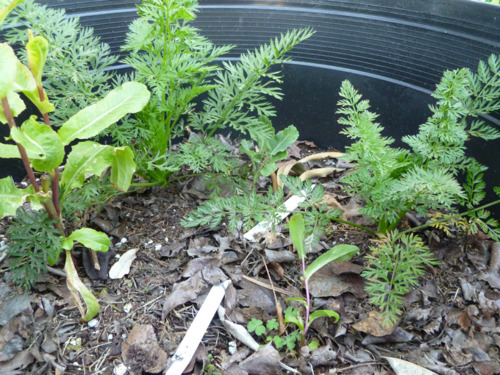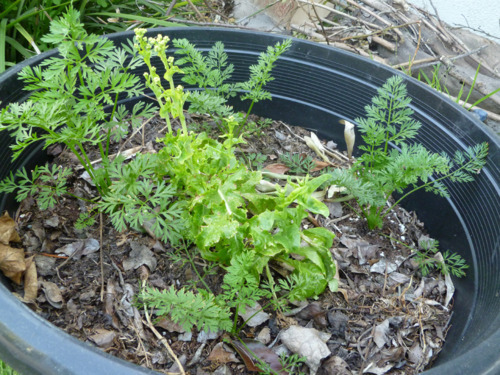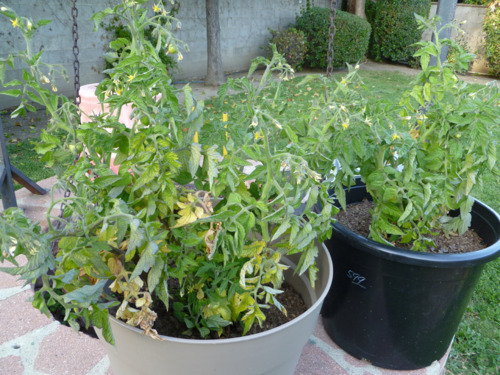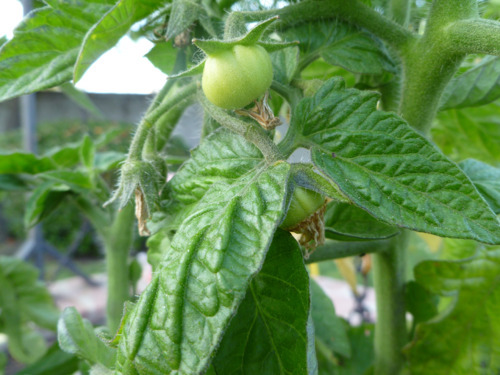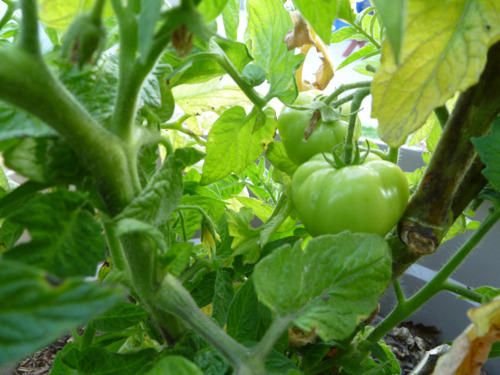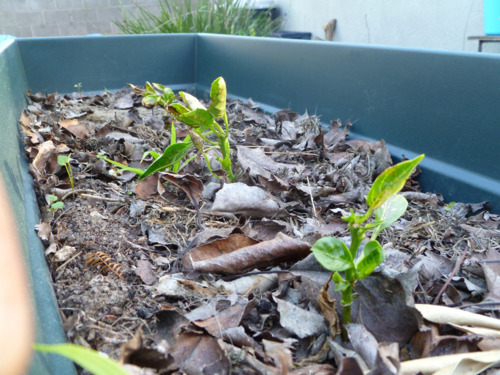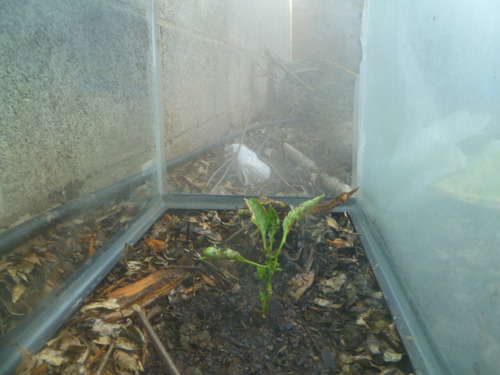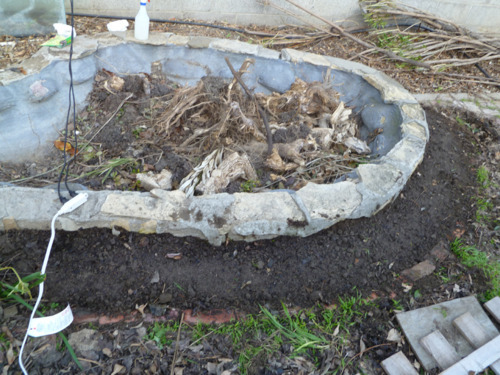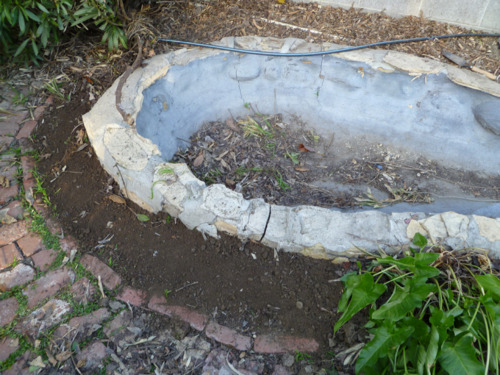In addition to going to the community garden today, I started some seeds for my own home garden since the seeds I ordered finally came in. I wanted to start earlier but the seeds took some time to get to me. Oh well. NBD.
First of all here is what I got (all from reimerseeds.com)
- UC 157 Asparagus
- White Spear Onions (bunching onions)
- Mountain Mint
- Wando Sweet Peas
- Alexandria Strawberries
- Dwarf Greek Basil
- Dandelion
- Roman Chamomile
- Valerian
This was the first time I was able to use a new seed-starter tool that I got called
the Soil Cube Tool. This is one of many little tools that compact soil into a little cube for starting seeds in, rather than using a plastic or peat seed-starting trays.
Plastic starting trays and cups are problematic in that the roots tend to hit the plastic and then start circling in a tangled clump inside the container, then when you plant that, the roots can still continue this root growth that has been "trained" by having it in the plastic pot and it can end up getting choked up in it's own roots. The way to help prevent this is to physically tease the roots out before planting, but that can cause damage and either way you're going to get some root-shock which means a delay in growth.
Peat is supposed to be nice because it's biodegradeable and you can supposedly just put the whole thing in the ground and the roots will grow out through the peat as it decomposes. Truthfully though, this can have the same problem as the plastic in inadvertently training the roots to grow in a compact tangled clump and frankly, I haven't found the peat pots to decompose all that well anyway.
Soil cubes or blocks differ in that there is no container whatsoever, the soil is the container. Since there is no edge to the "container" the roots will simply stop growing when the hit the edge. Plants roots have their own intelligence that will keep them from popping roots out of the sides of the soil cube. Instead, it will make the root system a bit more robust within the cube which serves to hold the cube together when it's in that form and when placed into the ground will just take right off and grow out into the soil, eliminating root shock. As for watering, you just water lightly, but the compaction and the fact that the roots hold it all together make the whole cube pretty decently held together.
FYI: Though the tool may be modern, the method is nothing new. The Aztecs did something similar way back int he day.
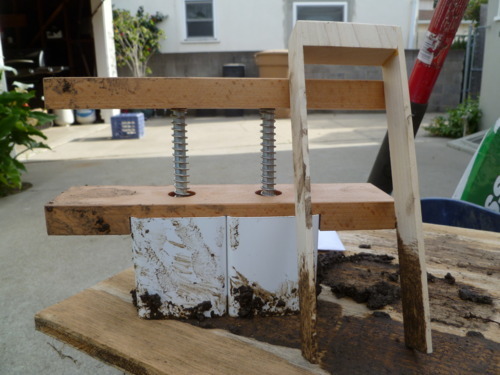
Here is the Soil Cube tool. It is made up of two square pieces of (PVC?) plastic with a handle and a spring press. You fill the plastic compartments with the soil mixture, place it on a flat surface, and press down firmly to compact the soil within the compartments. You then lift up the tool and press down again to slide the compacted soil cubes out of the chambers.

Above is the soil mixture I used. They recomend the following soil mix recipe:
- 3 parts peat moss
- 2 sand and perlite mixed
- 1 part garden soil
- 2 parts compost
- a touch of lime and fertilizer
I used some of those ingredients, but did not measure parts at all. I just threw it in there, mixed it up and got it wet to an oatmeal consistency as recommended.
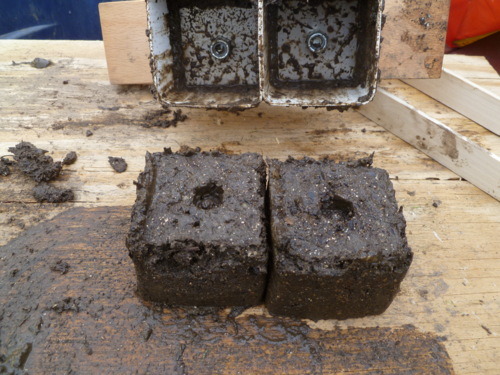
Here is what the soil cubes look like when they come out of the tool. Built into the tool is a couple of nuts which create little depressions, all set for putting the seeds in. They're not very deep though so for some seeds you may have to take a stick and make them bigger.
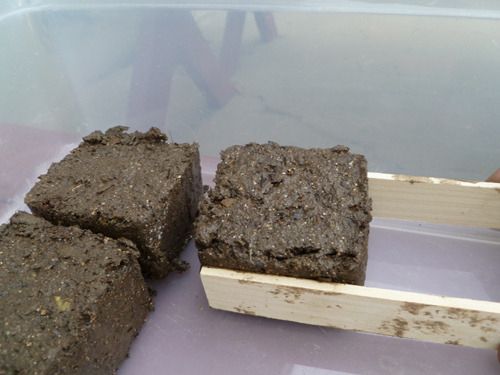
Anyway, you plant your seeds, cover with more soil and use some included wooden tongs to place them in your seed tray. I use my own grow-light system made from a plastic storage bin.
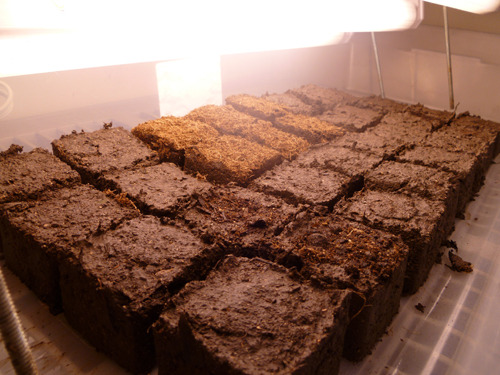
They almost look like brownies or something huh? lol. The ones in the middle are strawberries, which it is recommended to just very lightly cover with peat rather than "bury".
